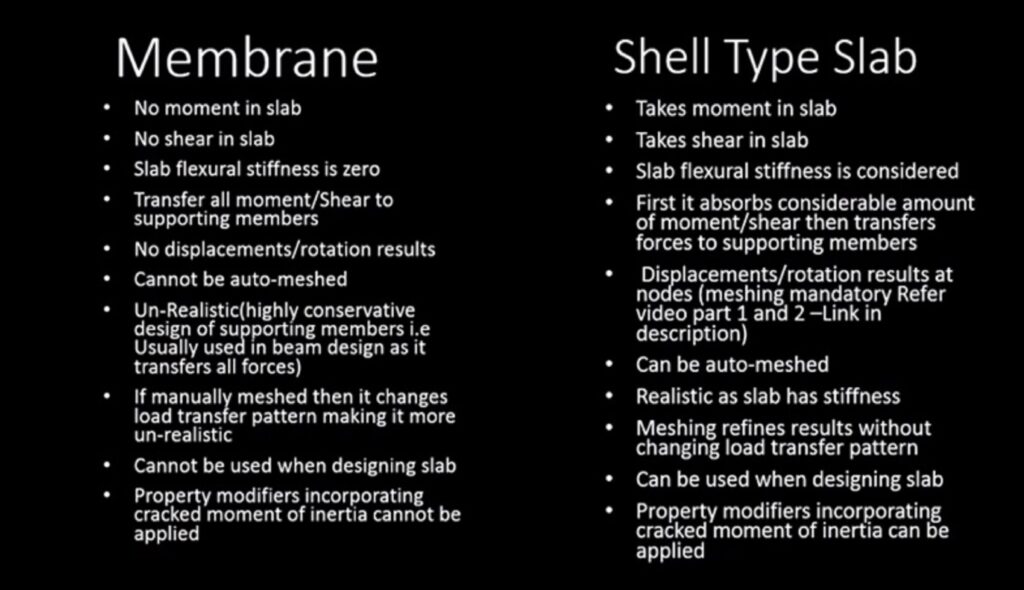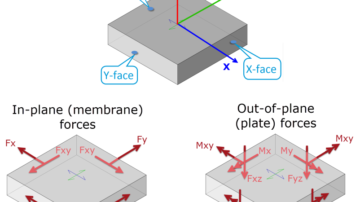This is a global differentiation in all the finite element software.
Membrane elements are used to represent only inplane stiffness of members. It acts like the bedsheet on your bed. The bedsheet does not have any kind of bending stiffness and so it bends without any resistance. So use this kind of element when you don’t want slabs or any other plates to resist bending I mean out of plane bending.
Shell elements on the other hand are more realistic for any structural wall or a slab or basement walls or even thick pipes. They have inplane as well as out of plane stiffness.
For example, all the elements in the image above are shell elements. If they were membrane then there would be much more distortion and you will not get out of plane shear forces acting on the member which will show inaccurate representation.

Shell elements have different bending theories:
- Mindlin theory (Used for Thick shells)
- Kirchhoff-Love theory (Used for Thin shells)
Most of the software have both thin and thick shell options. Most of the time we end up using thin shells. But it is also important to know when to use thick shells. So I suggest you, that you should refer both these theories.
Link of a pdf regarding this- https://resources.decode-bd.com/product/slab-shell-vs-membrane/
If you want a good book to refer, here it is:
Theory and analysis of elastic plates and shells – J. N. Reddy.

Leave a Reply
You must be logged in to post a comment.